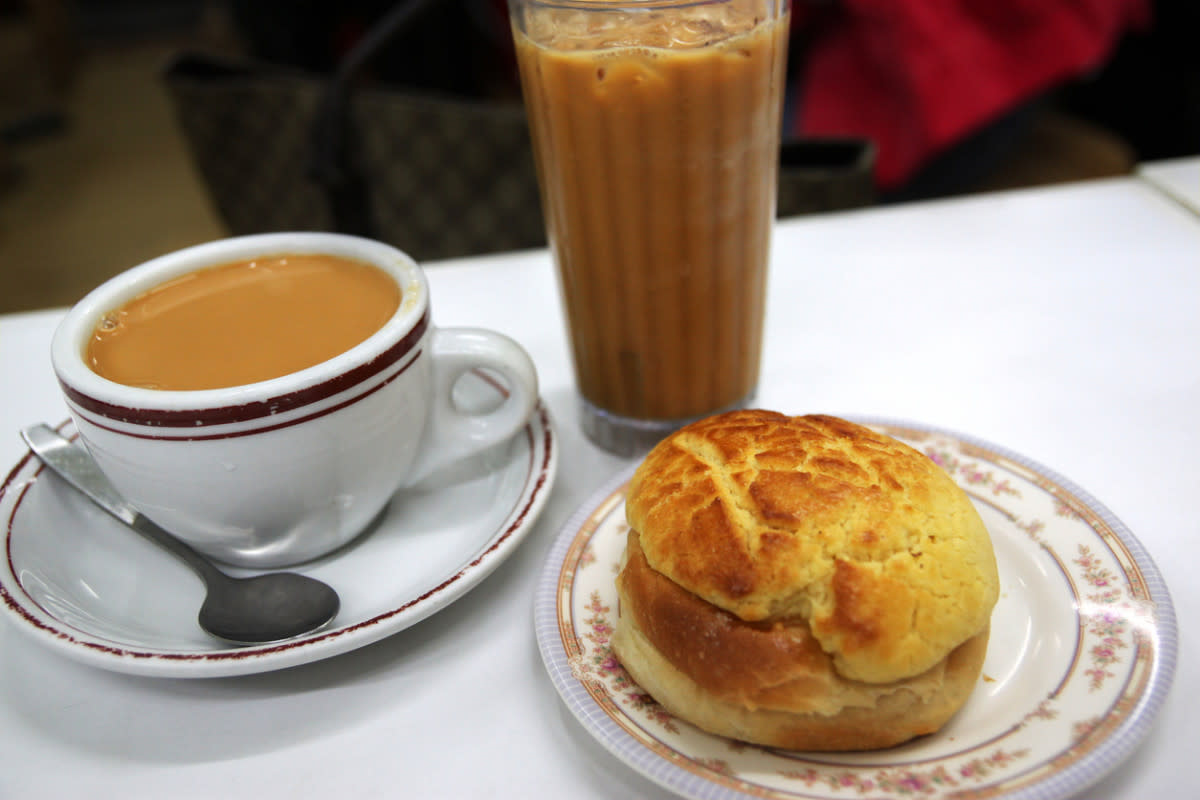The Chinese Bakery Drink You Need to Know About

Hong Kong Milk Tea with Pineapple Bun
While I love a PSL or peppermint mocha during the fall and winter months, the drink I reach for again and again when I’m in need of something warm and comforting isn’t from Starbucks or Dunkin’—it’s from my local Chinese bakery.
Growing up in one of New York City’s Chinatowns, I spent a lot of time at Chinese bakeries. It’s where we picked up afterschool snacks and loaves of milk bread for breakfast the next morning. On special occasions like Lunar New Year, we’d stop in to buy pastry boxes filled with assorted buns, flaky egg tarts and pillowy sponge cakes to bring to relatives’ homes.
My drink of choice as a kid was Ovaltine, but I traded that for milk tea as I got older. It’s continued to be my favorite, especially the rich and creamy Hong Kong-style milk tea. Stepping into a bakery and jostling with others to place my order with the aunties behind the counter is part of the experience, but there are times when I need a caffeine hit at home.
The recipe I’ve been turning to most recently comes from Natalie Hsieh, owner of Sun’s Organic Garden. She shares her take on the iconic drink in Made Here, a cookbook from non-profit Send Chinatown Love that features stories from New York City’s Asian communities (Full disclosure: I’m a volunteer and contributor).
Related: 10 of the Best Green Teas to Try Right Now
What Is Hong Kong Milk Tea?
Hong Kong milk tea is a unique variation of the drink that grew out of British colonial rule. With a whopping 2.5 million cups consumed yearly, it’s by far the most popular drink in Hong Kong, usually served at diners known as cha chaan tengs (aka “tea restaurants”).
What makes it stand out from the usual milk tea is its use of canned dairy instead of fresh, a substitution that came about because milk was too expensive at the time. It’s typically made with a combination of evaporated and condensed milks, which gives the tea a full-bodied texture and sweet flavor profile. Ceylon tea serves as the base, but any black tea can be used— many of the Chinese bakeries I go to opt for Lipton’s.
The most traditional steeping method involves a long cloth filter that resembles a stocking, earning the drink its popular nickname of “pantyhose milk tea.” Tea leaves are brewed in the filter, then strained using a fast pulling action that yields a strong, yet smooth tea.
How to Make Hong Kong Milk Tea at Home
There’s no need for special equipment to make a cup of Hong Kong milk tea. The drink requires just a handful of easy-to-find ingredients and simple steps to replicate at home.
Hsieh, who took over the longtime Chinatown tea shop in 2018, recommends evaporating milk from scratch whenever possible. While it does take a bit more time and effort, it allows for more control over the sweetness of the final beverage. If you don’t have time to go the homemade route, canned evaporated milk works, too. She also swaps in glycine, an alternative sweetener, but you can stick to condensed milk for a more traditional flavor.
The key to making black tea that’s smooth and not bitter is in the brewing time and temperature. Never use boiling hot water, which will scald and burn the leaves; instead bring the water to a gentle simmer. Black tea only requires a steeping time of 5 to 6 minutes; any longer and the harsh tannins will become more prominent, leading to a bitter beverage.
What to Serve With Hong Kong Milk Tea
Hong Kong milk tea can be enjoyed hot or over ice. In the summer months, I’ll often brew a pitcher of black tea and store it in the fridge so I can assemble a glass of chilled Hong Kong milk tea whenever I’m craving one.
Enjoy a cup alongside a Chinese bakery pastry like egg tarts or pineapple buns, or with your morning muffin or croissant.

